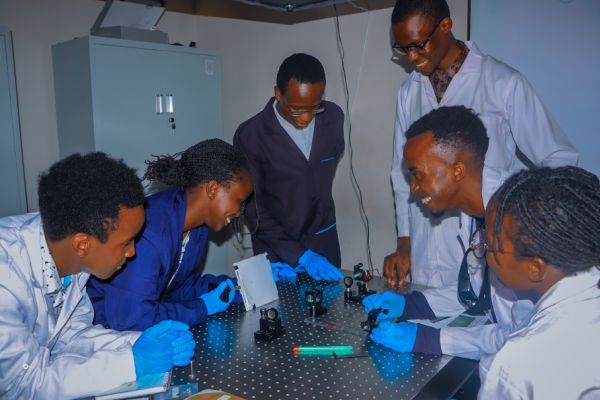IEEE Photonics Society Fellows, P. Daniel Dapkus, Ph.D. and Russell Dupuis, Ph.D., are the 2022 Laureates of the Benjamin Franklin Medal in Electrical Engineering.
They have received this honor for pioneering the technology that provides the materials quality and ultra-precision required for many device components central to modern life, including LEDs, transistors, lasers, and high-performance solar cells.
P. Daniel Dapkus and Russell Dupuis transformed the semiconductor fabrication method of metalorganic chemical vapor deposition (MOCVD) into the major means of creating the semiconductors at the heart of our phones, computers, solar cells, lights, and the internet itself. Their work has also resulted in far more energy-efficient microelectronics leading to marked environmental benefits.
As described on the Franklin Institute website:
Almost all the wonderful gadgets we use every day to work, play, and communicate are made possible by various types of semiconductor materials, created through several different techniques depending on the particular electronic characteristics required. One of the most important techniques is called metalorganic chemical vapor deposition (MOCVD). P. Daniel Dapkus and Russell Dupuis advanced MOCVD from an interesting laboratory technique to its full potential as a major commercial production technology for the semiconductor industry.
Invented at the Rockwell International company by Harold Manasevit, MOCVD was ripe for further investigation and development when Russell Dupuis joined the company in 1975. Compound semiconductors, which combine different materials into a single alloy, were coming into their own, and Dupuis was one of several researchers at Rockwell and elsewhere who began exploring how MOCVD could be used to manufacture high-quality semiconductors. When Daniel Dapkus joined Rockwell soon after Dupuis, the two refined MOCVD, showing that it was better-suited, yet more economical, than other techniques for creation of complex semiconductor structures. This resulted in mass-producible, efficient, and practical optoelectronic devices, such as solar cells, LEDs, and laser diodes, and included quantum well lasers—the device that is now at the heart of all fiber optic communications.
Dupuis and Dapkus followed similar paths that almost inevitably seemed to bring them together. Both native sons of Illinois and alumni of the University of Illinois at Urbana-Champaign, each had a fascination with science encouraged by the post-Sputnik boom in American science education and the birth of the U.S. space program. Ultimately, they would become the vanguard of a new generation of semiconductor pioneers. From John Bardeen, the co-inventor of the transistor, to Nick Holonyak, Bardeen’s student and the inventor of the visible-light LED—both recipients of Franklin Institute Awards—to Dupuis and Dapkus, who studied as graduate students under Holonyak, each would build upon and further develop their predecessor’s work into ever-expanding realms of importance.
Before Dupuis and Dapkus transformed MOCVD into a practical, scalable method for the manufacture of III-V semiconductor crystalline structures a type well-suited for optoelectronics, devices such as LEDs and lasers were expensive to produce by existing methods and rather inefficient in their operation. With the maturation of MOCVD, however, the great potential of optoelectronics finally came to fruition. The proof is all around us not only in the LED arrays in our flatscreen televisions and computer monitors, but in the ever-increasing ways in which LEDs and other optoelectronic components are employed in lighting, generate energy for heating homes, and produce the devices that carry and decode information on the internet.
Apart from their versatility and long life, such devices offer another crucial advantage: energy efficiency. LEDs are about four times as efficient as fluorescent lighting and 20 times as efficient as incandescent lighting, advantages that directly translate into a savings of billions of dollars in energy costs and substantial reduction in carbon emissions. For sustainable energy generation, MOCVD has enhanced the design and manufacture of semiconductor photovoltaic devices for solar energy both on Earth and in solar-powered spacecraft, including Martian rovers, the International Space Station, and hundreds of commercial, scientific, and military satellites.
The MOCVD technique perfected by Dupuis and Dapkus can also be said to have made the modern high-speed internet possible, by making the quantum well laser an efficient, economical, and practical foundation of fiber optic communications. Of course, the internet existed before fiber optics became a viable commercial technology, but it was bound by the speed and bandwidth limitations of copper wires and electrical signals. The advent of laser diodes such as the quantum well laser allowed engineers to free computer networks from those constraints, leading to the enormous speeds that have given us streaming video services and Zoom conferencing. Indeed, perhaps the most significant and lasting tribute that can be paid to Russell Dupuis and Daniel Dapkus is the acknowledgment that we use and depend upon their work and creativity practically every day.
Excerpts from © 2022 The Franklin Institute news and releases.




